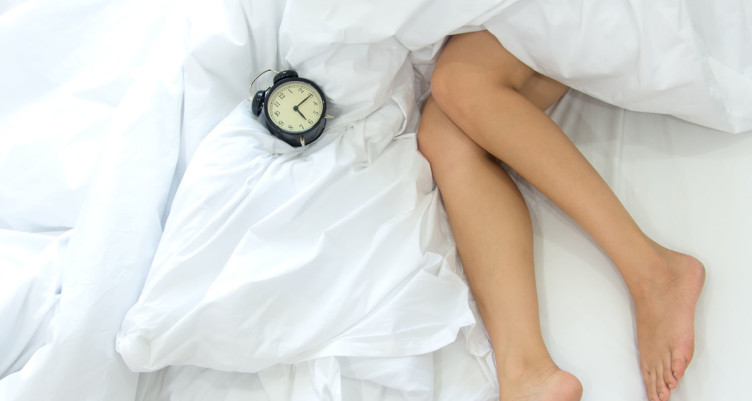How to Find Your Best Sleep Cycle: Polyphasic, Biphasic and Monophasic Sleep

- The three most types of sleep cycles—monophasic, biphasic, and polyphasic—involve different periods of rest.
- While most of the world embraces a monophasic approach to sleep, that doesn’t necessarily make it the best sleep cycle option for you.
- Discover the differences between each cycle, and find out what steps you can take to make your environment more sleep-friendly.
When you think of getting a good night’s sleep, what’s the first thing that comes to mind?
Most of the conversation around proper sleep centers around the number of hours you’re getting (or not getting). But while logging eight hours of sleep every night might be a great fit for your body — leaving you feeling refreshed, energized, and ready to take on the day — there’s no one-size-fits-all-solution to sleep. The best sleep schedule for you and your body might fall outside conventional parameters.
The good news is, when it comes to sleep, you’ve got options. Let’s take a look at the three most common sleep cycles—and how to determine which is going to give you the high-quality zzz’s to function at your highest level.
Monophasic sleep cycle

The most common sleep cycle is the monophasic sleep pattern.
“Think about the sleep pattern most of us keep: a stretch of 7-8 hours a night asleep, followed by a long, usually unbroken stretch of wakefulness of about 16 hours, before dropping back into sleep,” says sleep expert Dr. Michael Breus, PhD.
Monophasic sleep is the norm today—and following a “normal” sleep pattern definitely has its benefits. “Basically, everyone else is on a monophonic sleep schedule, so you are in a rhythm with the rest of the world,” says Breus.
A monophasic sleep pattern wasn’t always the norm. “The shift to the 8-hour night of sleep may have been a relatively recent development, one that was spurred on by industrialization and widespread access to electricity and artificial light,” says Breus.
Related: How to Sleep Better: Science-Backed Sleep Hacks to Wake Up Ready to Go
Biphasic sleep cycle

Your next option when it comes to shut-eye? Following a biphasic sleep pattern.
Biphasic sleep is divided into two parts. It generally involves a long stretch of sleep during the night, and a much shorter block during the day.
“For example, a 6-hour nightly sleep period might be paired with a 30-90 minute nap during the day,” says Breus.
While monophasic sleep is definitely the most prominent sleep pattern, there are plenty of countries that embrace a biphasic sleep pattern—particularly in Europe.
“Biphasic sleep is sometimes known as ‘siesta sleep,’ a nod to some Western cultures, including Spain and Greece, that continue to incorporate the afternoon rest as part of their cultures and commonly held sleep patterns,” says Breus.
In addition to the “siesta” style of biphasic sleep, there’s also segmented sleep. With segmented sleep, instead of sleeping straight through the night, you break up your sleep pattern into two longer stretches. This was likely the most common sleep pattern before industrialization.
“Some scientific findings suggest that our ancestors’ sleep patterns may have included a stint of sleep lasting 3-5 hours, followed by a period of time awake [and] engaging in some light activity, followed by another stretch of 3-5 hours of sleep,” says Breus.
Polyphasic sleep cycle

The third most common sleep cycle is the polyphasic sleep pattern, which is categorized by far shorter periods of sleep each day—but a lot more of them.
“Polyphasic sleep breaks up sleep into more than two episodes throughout the day and night,” says Breus.
If you’re a polyphasic sleeper, you might doze for as many as six times a day. What might that look like?
“Some combination of 2-3 hour blocks of sleep and 30-90 minute naps, which over 24 hours are meant to add up to the equivalent of a full night of rest,” says Breus.
Choosing the right sleep pattern for you

As mentioned, there’s no one-size-fits-all solution to sleep. The best sleep cycle for you to follow is whichever one will leave you feeling as well-rested as possible. If you find that following the “norm” and getting eight hours of sleep a night works for you? Go for it. If catching six hours of shut-eye every night and supplementing it with a nap or two leaves you energized, knock yourself out. If spreading your sleep across shorter blocks throughout the day feels best? More power to you.
Just make sure that whatever sleep schedule you choose, you stay consistent.
“Consistency is crucial to healthy sleep, no matter what sleep schedule you follow,” says Breus.
And while it might feel challenging at first to switch sleep patterns (for example, from a monophasic sleep pattern to a biphasic sleep pattern), if you stick to a consistent schedule, your body will adjust—and the quality of your sleep will improve right along with it.
While it’s up to you to choose whatever sleep schedule is best for you, if you have mental health issues, Breus highly recommends sticking to a monophasic sleep pattern. “Depression and other mood disorders are associated with disruptions to circadian rhythms, as well as with disrupted sleep patterns and poor-quality sleep,” says Breus. “Attempting to use a segmented sleep schedule could destabilize sleep patterns and circadian rhythm, worsening sleep and exacerbating mood disorders.”
The bottom line: The three most common sleep cycles are vastly different from one another, and while most people fall into the monophasic category, that doesn’t mean you have to follow that approach. Find a sleep schedule that works and stick to it. As they say, consistency is key!
Ready to take your sleep to the next level? Download our in-depth sleep guide for science-backed tips and strategies to achieve better zzz’s.
Sign up for early access to sales, product launches, the latest Bulletproof news and more!



